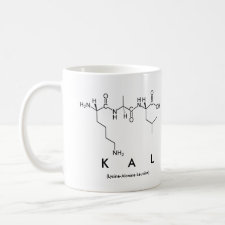
Authors: Altintas Z, Abdin MJ, Tothill AM, Karim K, Tothill IE
Article Title: Ultrasensitive detection of endotoxins using computationally designed nanoMIPs.
Publication date: 2016
Journal: Analytica Chimica Acta
Volume: 935
Page numbers: 239-248.
DOI: 10.1016/j.aca.2016.06.013
Alternative URL: http://www.sciencedirect.com/science/article/pii/S0003267016307759
Abstract: Novel molecularly imprinted polymer nanoparticles (nanoMIPs) were designed for endotoxin from Escherichia coli 0111:B4, using computational modeling. The screening process based on binding energy between endotoxin and each monomer was performed with 21 commonly used monomers, resulting in the selection of itaconic acid, methacrylic acid and acrylamide as functional monomers due to their strong binding interaction with the endotoxin template. The nanoMIPs were successfully synthesized with functional groups on the outer surface to aid in the immobilization onto sensor surface. The solid phase photopolymerization approach used for the synthesis of nanoMIPs ranging from 200 to 235 nm in diameter. The limit of detection and KD were significantly improved when endotoxin samples were prepared using a novel triethylamine method. This improved the efficiency of gold nanoparticle functionalization by targeting the subunits of the endotoxin. Compared to the vancomycin MIP control, the endotoxin MIPs displayed outstanding affinity and selectivity towards the endotoxin with KD values in the range of 4.4-5.3 x 10-10 M, with limits of detection of 0.44 ± 0.02 ng mL-1 as determined by surface plasmon resonance (SPR) sensor when itaconic acid was used as the functional monomer. The MIP surface can be regenerated > 30 times without significant loss of binding activity making this approach highly cost effective for expensive analyte templates. The combination of molecular modeling and solid phase synthesis enabled the successful synthesis of nanoMIPs capable of recognition and ultrasensitive detection of endotoxins using the highly sensitive SPR biosensor with triethylamine method
Template and target information: endotoxin
Author keywords: Molecularly imprinting polymers (MIPs), Endotoxins, computational modeling, nanomaterials, Triethylamine, biosensor



Join the Society for Molecular Imprinting

New items RSS feed
Sign-up for e-mail updates:
Choose between receiving an occasional newsletter or more frequent e-mail alerts.
Click here to go to the sign-up page.
Is your name elemental or peptidic? Enter your name and find out by clicking either of the buttons below!
Other products you may like:
 MIPdatabase
MIPdatabase









